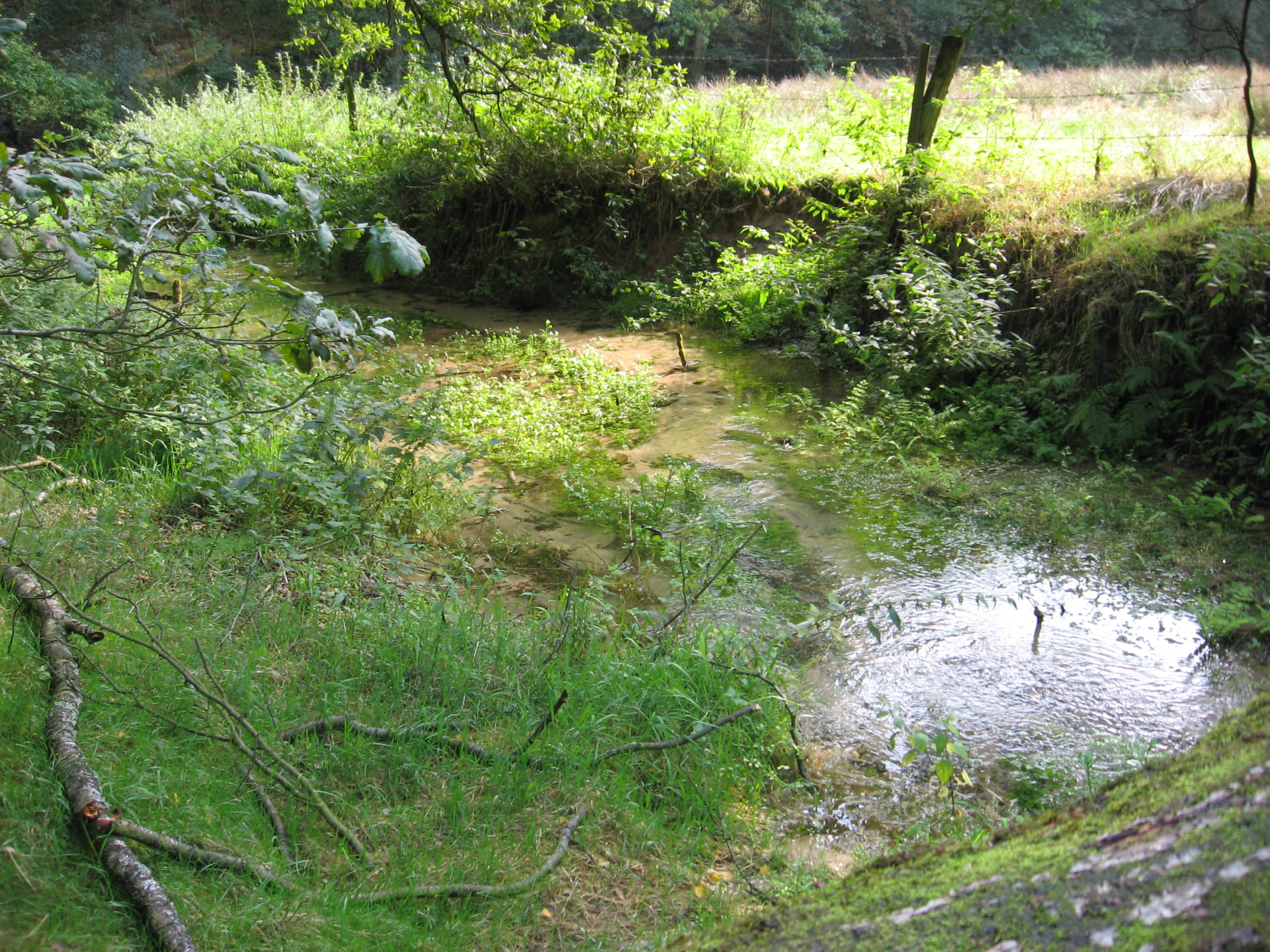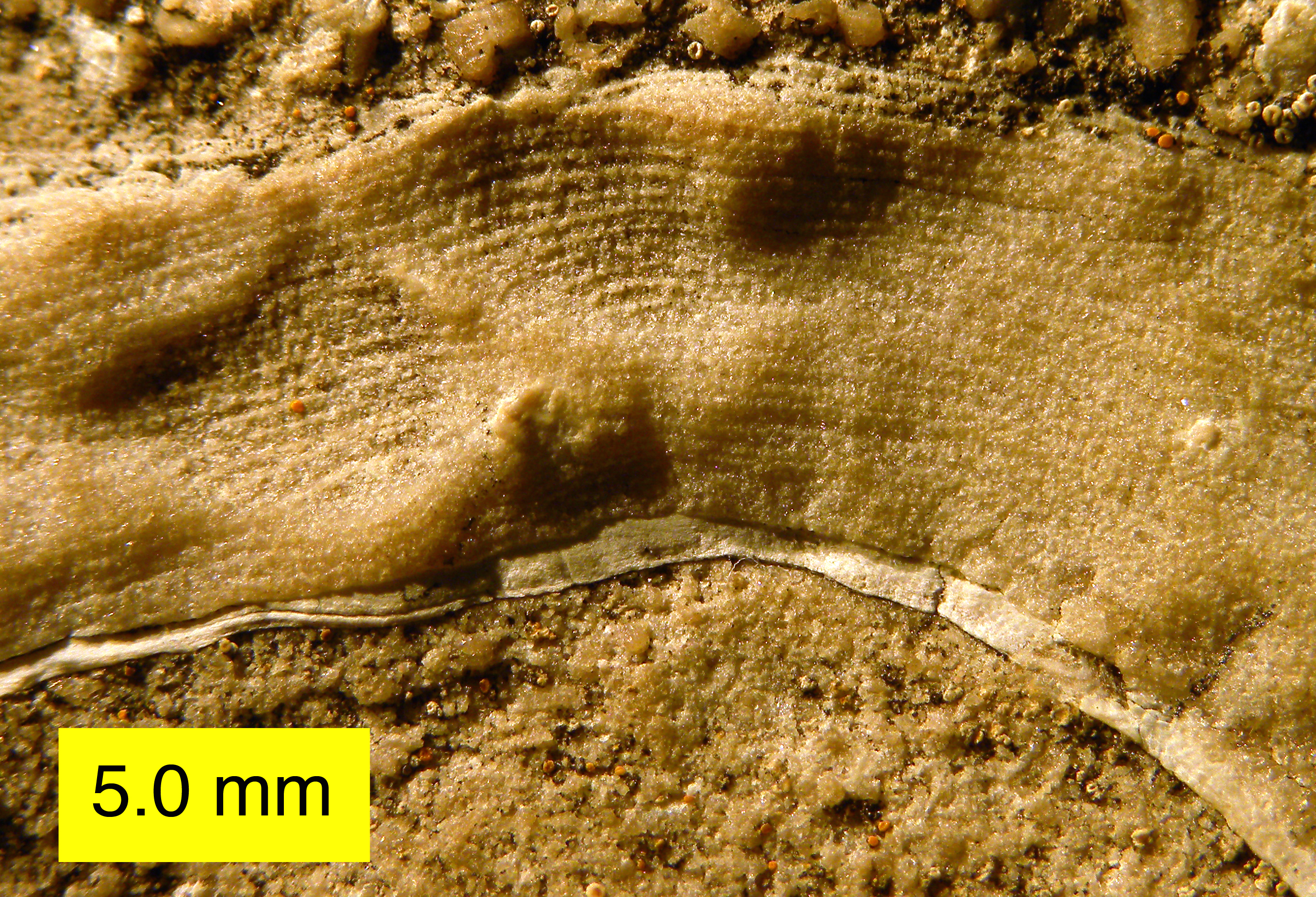|
Emsian Life
The Emsian is one of three faunal stages in the Early Devonian Epoch. It lasted from 407.6 ± 2.6 million years ago to 393.3 ± 1.2 million years ago. It was preceded by the Pragian Stage and followed by the Eifelian Stage. It is named after the Ems river in Germany. The GSSP is located in the Zinzil'ban Gorge in the Kitab State Geological Reserve of Uzbekistan, above the contact with the Madmon Formation. In North America the Emsian Stage is represented by Sawkill or Sawkillian time. Biological events During this period, earliest known agoniatitid ammonoid fossils began appearing within this stage after first appearing in previous stage and began to evolutionarily radiate within this stage, in which a new ammonoid order Goniatitida rises in the end of Zlichovian stage (Siberian representation; corresponds to early Eifelian and after the end of Early Devonian, before 391.9 mya). Later agoniatitid ammonoids would die out in the Taghanic event in the upper middle Givetian ... [...More Info...] [...Related Items...] OR: [Wikipedia] [Google] [Baidu] |
International Commission On Stratigraphy
The International Commission on Stratigraphy (ICS), sometimes referred to unofficially as the "International Stratigraphic Commission", is a daughter or major subcommittee grade scientific daughter organization that concerns itself with stratigraphy, stratigraphical, geology, geological, and chronology, geochronological matters on a global scale. It is the largest subordinate body of the International Union of Geological Sciences (IUGS). The ICS is essentially a permanent working committee, working subcommittee, which meets far more regularly than the quadrennial meetings scheduled by the IUGS, when it meets as a congress or committee, membership of the whole. Aims One of its main aims, a project begun in 1974, is to establish a multidisciplinary standard and global geologic time scale that will ease paleontology, paleontological and geobiology, geobiological comparisons region to region by benchmarks with stringent and rigorous strata criteria called Global Boundary Stratotype ... [...More Info...] [...Related Items...] OR: [Wikipedia] [Google] [Baidu] |
Ems River
The Ems (german: Ems; nl, Eems) is a river in northwestern Germany. It runs through the states of North Rhine-Westphalia and Lower Saxony, and discharges into the Dollart Bay which is part of the Wadden Sea. Its total length is . The state border between the Lower Saxon area of East Friesland (Germany) and the province of Groningen (Netherlands), whose exact course was the subject of a border dispute between Germany and the Netherlands (settled in 2014), runs through the Ems estuary. Course The source of the river is in the southern Teutoburg Forest in North Rhine-Westphalia. In Lower Saxony, the brook becomes a comparatively large river. Here the swampy region of Emsland is named after the river. In Meppen the Ems is joined by its largest tributary, the Hase River. It then flows northwards, close to the Dutch border, into East Frisia. Near Emden, it flows into the Dollart bay (a national park) and then continues as a tidal river towards the Dutch city of Delfzijl. Betw ... [...More Info...] [...Related Items...] OR: [Wikipedia] [Google] [Baidu] |
Cretaceous–Paleogene Extinction Event
The Cretaceous–Paleogene (K–Pg) extinction event (also known as the Cretaceous–Tertiary extinction) was a sudden mass extinction of three-quarters of the plant and animal species on Earth, approximately 66 million years ago. With the exception of some ectothermic species such as sea turtles and crocodilians, no tetrapods weighing more than survived. It marked the end of the Cretaceous Period, and with it the Mesozoic era, while heralding the beginning of the Cenozoic era, which continues to this day. In the geologic record, the K–Pg event is marked by a thin layer of sediment called the K–Pg boundary, which can be found throughout the world in marine and terrestrial rocks. The boundary clay shows unusually high levels of the metal iridium, which is more common in asteroids than in the Earth's crust. As originally proposed in 1980 by a team of scientists led by Luis Alvarez and his son Walter, it is now generally thought that the K–Pg extinction was cause ... [...More Info...] [...Related Items...] OR: [Wikipedia] [Google] [Baidu] |
Givetian
The Givetian is one of two faunal stages in the Middle Devonian Period. It lasted from million years ago to million years ago. It was preceded by the Eifelian Stage and followed by the Frasnian Stage. It is named after the town of Givet in France. The oldest forests occurred during the late Givetian. The lower GSSP is located at Jebel Mech Irdane, Tafilalt, Morocco. Name and definition The Givetian Stage was proposed in 1879 by French geologist Jules Gosselet Jules-Auguste Gosselet (19 April 1832 – 20 March 1916) was a French geologist born in Cambrai, France. [...More Info...] [...Related Items...] OR: [Wikipedia] [Google] [Baidu] |
Late Devonian Extinction
The Late Devonian extinction consisted of several extinction events in the Late Devonian Epoch, which collectively represent one of the five largest mass extinction events in the history of life on Earth. The term primarily refers to a major extinction, the Kellwasser event (also known as the Frasnian-Famennian extinction), which occurred around 372 million years ago, at the boundary between the Frasnian stage and the Famennian stage, the last stage in the Devonian Period.Racki, 2005McGhee, George R. Jr, 1996. The Late Devonian Mass Extinction: the Frasnian/Famennian Crisis (Columbia University Press) Overall, 19% of all families and 50% of all genera became extinct. A second mass extinction, the Hangenberg event (also known as the end-Devonian extinction), occurred 359 million years ago, bringing an end to the Famennian and Devonian, as the world transitioned into the Carboniferous Period. Although it is well established that there was a massive loss of biodiversity in the Late ... [...More Info...] [...Related Items...] OR: [Wikipedia] [Google] [Baidu] |
Annum
A year or annus is the orbital period of a planetary body, for example, the Earth, moving in its orbit around the Sun. Due to the Earth's axial tilt, the course of a year sees the passing of the seasons, marked by change in weather, the hours of daylight, and, consequently, vegetation and soil fertility. In temperate and subpolar regions around the planet, four seasons are generally recognized: spring, summer, autumn and winter. In tropical and subtropical regions, several geographical sectors do not present defined seasons; but in the seasonal tropics, the annual wet and dry seasons are recognized and tracked. A calendar year is an approximation of the number of days of the Earth's orbital period, as counted in a given calendar. The Gregorian calendar, or modern calendar, presents its calendar year to be either a common year of 365 days or a leap year of 366 days, as do the Julian calendars. For the Gregorian calendar, the average length of the calendar year (the mea ... [...More Info...] [...Related Items...] OR: [Wikipedia] [Google] [Baidu] |
Goniatite
Goniatids, informally goniatites, are ammonoid cephalopods that form the order Goniatitida, derived from the more primitive Agoniatitida during the Middle Devonian some 390 million years ago (around Eifelian stage). Goniatites (goniatitids) survived the Late Devonian extinction to flourish during the Carboniferous and Permian only to become extinct at the end of the Permian some 139 million years later. Morphology All goniatites possessed an external shell, which is divided internally into chambers filled with gas giving it buoyancy during the life of the animal. An open chamber at the front of the shell provided living space for the goniatitid animal, with access to open water through a ventral siphuncle. The general morphology and habit of goniatites was probably similar to that of their later relatives the ammonites, being free swimming and possessing a head with two well developed eyes and arms (or tentacles). Goniatite shells are small to medium in size, almost always l ... [...More Info...] [...Related Items...] OR: [Wikipedia] [Google] [Baidu] |
Ammonoidea
Ammonoids are a group of extinct marine mollusc animals in the subclass Ammonoidea of the class Cephalopoda. These molluscs, commonly referred to as ammonites, are more closely related to living coleoids (i.e., octopuses, squid and cuttlefish) than they are to shelled nautiloids such as the living ''Nautilus'' species. The earliest ammonites appeared during the Devonian, with the last species vanishing during the Cretaceous–Paleogene extinction event. Ammonites are excellent index fossils, and linking the rock layer in which a particular species or genus is found to specific geologic time periods is often possible. Their fossil shells usually take the form of planispirals, although some helically spiraled and nonspiraled forms (known as heteromorphs) have been found. The name "ammonite", from which the scientific term is derived, was inspired by the spiral shape of their fossilized shells, which somewhat resemble tightly coiled rams' horns. Pliny the Elder ( 79 AD nea ... [...More Info...] [...Related Items...] OR: [Wikipedia] [Google] [Baidu] |
Agoniatitida
Agoniatitida, also known as the Anarcestida, is the ancestral order within the cephalopod subclass Ammonoidea originating from bactritoid nautiloids, that lived in what would become Africa, Asia, Australia, Europe, and North America during the Devonian from about the lower boundary of Zlichovian stage (corresponding to late Pragian, after 409.1 mya) into Taghanic event during upper middle Givetian (between 385 and 384 mya), existing for approximately 25 million years. Taxonomic nomenclature The Order Agoniatitida, named by Ruzhencev, 1957, is a subjective synonym for the Order Anarcestida, named by Miller and Furnish, 1954.Miller, Furnish, and Schindewolf, 1957; Paleozoic Ammonoidea; Treatise on Invertebrate Paleontology, Part-L, Ammonoidea, Geological Society of America & Univ of Kansas. Accordingly, the name Anarcerstida is based on the family Anarcestidae (ex Anarcestinae) of Steinmann 1890. That of Agoniatiida is based on the family Agnoniatidae of Holzapfel, 1899. ... [...More Info...] [...Related Items...] OR: [Wikipedia] [Google] [Baidu] |
Kitab State Geological Reserve , or ''kitāb''
*
{{dab, geo ...
Kitab ( ar, کتاب, link=no, ''kitāb''), also transcribed kitaab, is the Arabic, Turkic, Urdu, Hindi and in various Indian Languages word for "book". * ''Kitaab'', a 1977 Hindi language movie * ''Kithaab'' (also written ''Kitab''), a 2018 Malayalam language play * ''Kitab'', the Russian name for Kitob, a city in Uzbekistan See also * K-T-B, a Semitic word triconsonantal root * Khitab, a town in northwestern Syria * Kitab-Verlag, a publishing house in Klagenfurt, Austria * Mus'haf A muṣḥaf ( ar, مُصْحَفْ, ; plural ''maṣāḥif'') is an Arabic word for a codex or collection of sheets, but also refers to a written copy of the Quran. The chapters of the Quran, which Muslims believe was revealed during a 23-year ... [...More Info...] [...Related Items...] OR: [Wikipedia] [Google] [Baidu] |





